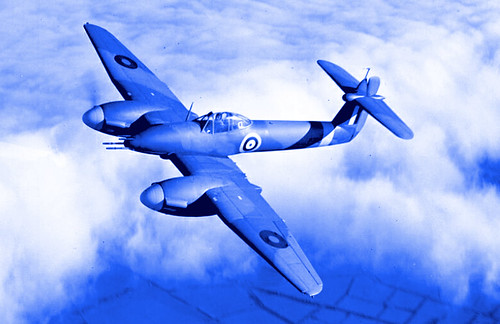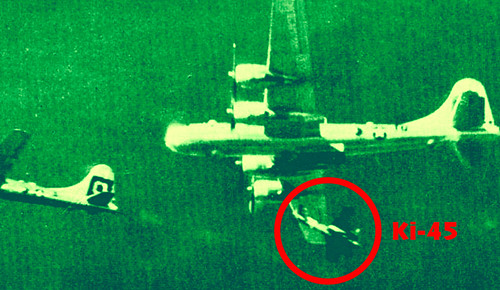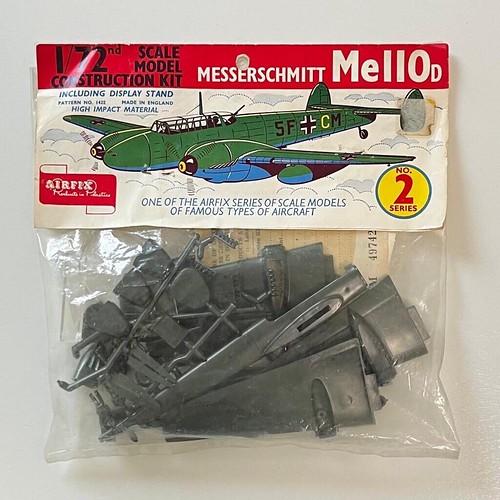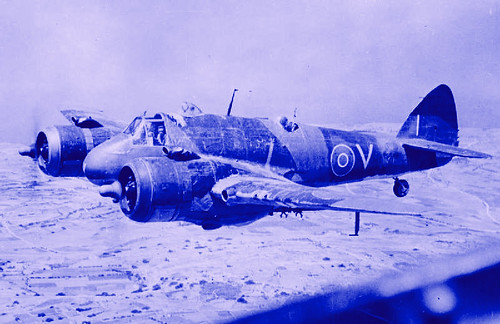Does Bigger Mean Better? WW2 'Heavy Fighters'.
Beauty is in the Eye of the Beholder
Aircraft are perhaps my favourite military machines. There's something about combat planes, even if someone doesn't much care for war and it's technology most can generally appreciate and romance of flight and the elegance of a well designed aeroplane.
Out of all the types of aircraft which served the world's air forces I have a special liking for twin engine light and medium fighters and bombers, even over the much vaunted single engined fighters!
I don't actually know exactly why, it's maybe something to do with these types being generally more multirole in function, or that they can be more powerful - both in terms of engines and weaponry. Or it may have something to do with the type of specialist missions that these types were designed for or eventually undertook.
But whatever the reason, I do love to see a fast and agile two-engined warbird, more especially - out of the wide variety of types - the fighter variants slightly over the bombers (but I will be doing a separate post on my favourite twin-engine bombers later).
One last note, I DO NOT proclaim that this list represents 'the best' aircraft in this category, merely that they are my favourite (thus avoiding any arguments - this is just MY opinion)!
5. Kawasaki Ki-45 - Japan
The Japanese name for this aircraft was the Toryu (屠龍, "Dragonslayer"). And armed with 37mm cannon you can see why this was thought appropriate! Designed in 1937 it's as if the Japanese almost predicted the bombing campaign that was later to be waged against them. However, this aircraft wasn't design specifically as a 'bomber killer' but rather as a long range escort fighter, much like the German Me110.
 |
| Above: The Allied code name for the Ki-45 was 'Nick', but I thought it was a shame that it wasn't 'Jack' given it's eventual giant slaying attributes! |
Rather like it's German equivalent the 'heavy escort' fighter concept foundered, and instead evolved into a class of multi-role combat aircraft where the type was better suited.
The reason for my inclusion of this aircraft on my list is a bit weirdly specific. Yes, it was an attractive design, but it is very much 'of a type' based on the ideas - proven flawed - of the 'heavy escort' interwar concept (much like the Me110). But I chose this aircraft because on one particular photograph!
This amazing photo shows a Ki-45 being every bit the 'Dragonslayer' that it was intended by taking on the mighty US B-29 Superfortress! This David versus Goliath image really appeals to me, not so much because I relish any victory over our American allies, but because I respect the inherent tenacity of the Japanese and because I find this desperate duel in the sky incredible!
4. Fokker G.I - Netherlands
While you don't think of the Netherlands as one of the big players in WW2 and have probably never heard of the G.I fighter you will have certainly heard of the name of Fokker. What surprises most people, though, is that Anton Herman Gerard Fokker (6 April 1890 – 23 December 1939) was a Dutch aviation pioneer, aviation entrepreneur, aircraft designer, and aircraft manufacturer and not German (despite his links to the infamous WW1 Fokker fighter designs)!
Fortunately, Mr. Fokker chose to return to his native Holland and his company went on to make some very interesting designs on the lead up to WW2. Of particular interest to aircraft enthusiasts as something of a 'what if' talking point was their G.I aircraft, which - again - was born from the 1930 preoccupation with the heavy fighter concept (like - again - the Me110).
Although, and this is somewhat contentious, some might equate the G.I more with the American P.38 Lightning than the Me110. The design allusion is obvious with the G.I's twin boom design, but with a crew of 2-3 it perhaps more easily fits the Me110 category. It's arguable.
With it's eight - yes, eight - machineguns in the nose you can see why the G.I was covering a few bases with it's design and can easily slip in between heavy-fighter and multi-role concepts (the Dutch obviously keen on getting the most bang for their buck with a plane that could 'do everything')!
In any case, despite the relatively quick fall of the Netherlands during the Blitzkrieg War of the Low-Countries early in the war, the type did show promise and did score multiple kills over German aircraft. It's interesting, and perhaps rather apocryphal, that the French gave the aircraft the nickname of le Faucheur ("The Reaper")!
We shall never know just how accurate this name was, although I personally think it may have been somewhat more on the nose had Finland bought the G.I (as they were considering) rather than the Bristol Blenheim MK1s that they eventually did.
3. Messerschmitt Bf 110 - Germany
Well, it had to be here didn't it! I'm not entirely sure whether we can identify the Me110 as the founding aircraft of the interwar obsession with the heavy fighter concept but it's perhaps safer to say that it is the most well known and did at least give us the name Kampfzerstörer (battle destroyer) or just 'destroyer' aircraft.
The failure of this concept is up for debate as while the Me110 did certainly disappoint during the Battle of Britain in this role (heavy long range escort fighter), some would point to the P.38 Lightning as proof that the idea could work. Perhaps an over-simplification might be that Herman Goering (the originator of the design xxxx) asked for the aircraft to fulfil too many roles to the detriment of the fighter aspect of it's character. Therein is where the Lockheed P.38 shone, in that it was specifically a twin-engined single seat fighter.
In any case, like so many of these heavy fighter designs the Me110 did eventually become a very successful multi-role aircraft.
Again, my inclusion of this in my list is slightly personal as I always fondly think of the Me110 as it was - I remember - one of the best Airfix kits that I made when I was young that I was really proud of (particularly the painting of the mottled camouflage). I hung this model from my bedroom ceiling with fishing line - as was the fashion in the 1960s and 70s - and the sense of pride in this model has coloured my general appreciation of the real aircraft!
2. Bristol Beaufighter - UK
A wee bit on the 'beefy' side in this list is the 'Beau'. It nearly tips into the low end of the medium-bomber scale. But this may be to do with it's Beaufort bomber origins, in any case, unlike all the other aircraft on this list the Beaufighter was not designed from scratch as a heavy fighter, but was a modification of a bomber and was specifically a multi-role aircraft.
So, why on this list? Well, it maybe it's to do with it's use in ground attack and it's crew of just two. And with it's powerful main armament of four 20mm cannon and six .303 machineguns it really does deserve the inclusion as a 'destroyer' aircraft! (If just in name, if not specific application!)
Also, I have a particular passion for ground attack aircraft and the missions taken on by the Beaufighter crews were some of the most daring and dangerous and devastating taken on by Allied aircrews during WW2.... It's no wonder the Japanese called the 'Beau' Whispering Death!
1. Westland Whirlwind - UK
My absolute favourite 'twin' is the much maligned Whirlwind, in fact I probably like it all the more because it's such a divisive aircraft. Was it an inspired design that was just unfortunate that it's engines stopped it from attaining it's full potential? Or was it just another victim of the flawed interwar 'heavy fighter' concept?
In a funny way it's hard to understand why the American P.38 Lightning was a success but the Whirlwind wasn't. They are practically - aside from the twin boom tail design - near enough the same aircraft! (I'm painting with broad strokes here.)
Well, as already hinted at, the key to the difference in performance and reputation lies in the engines. The poor Whirlwind was perhaps a victim of the clammer for advanced engine technology which wasn't quite proven... It was a ambitious gamble that failed (some would say).
The debate about the Whirlwind is complex and I'll let Ed Nash do his exceptional 'deep dive' into the topic with this video...
My personal opinion, and why I love the aircraft, is that it was basically 'right thinking' by the powers that be (for once) and unlike the Me110 it was not based on flawed and muddled theories. And, in the end, it did provide good service and those that flew it generally praised it.
The Whirlwind did not 'suffer the fate' of other pre-war heavy fighter designs in that is was simply turned into a 'multi-role' jack of all trades but master of none. Instead it used it's primary advantage - it's terrifying armament of four 20mm cannon - to great use as a ground attack specialist.
But, once again, the main reason I have a soft spot for this warbird is a personal one as because I remember so vividly one of the first Commando comic books I ever bought, which was about a Whirlwind squadron and their adventures. As a kid I was completely drawn in by the idea of such a powerful and devastating single seat fighter as the Westland Whirlwind!!!








Post a Comment